Sanctuary fences keep predators out – but they’ve also become a popular ‘highway’ for ship rats travelling around the sanctuary exterior. Rats have discovered that the rolled steel hood (designed to stop mammals climbing over the fence), also makes a great way to get around, safely out of reach of their own predators like stoats and cats.
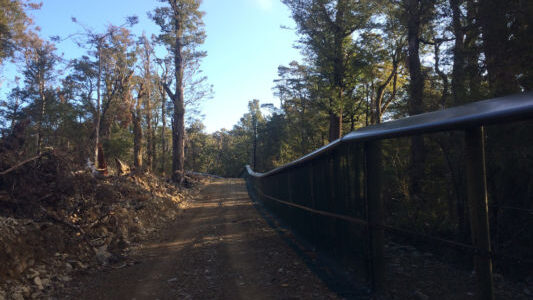
With sanctuary fences becoming a centre of rat activity, the rodents are also right on site to discover any accidental breaches in the barrier, such as a fallen tree – and that’s worrying. So researchers Bridgette Farnworth, John Innes, Catherine Kelly and Joseph R. Waas from University of Waikato and Manaaki Whenua/Landcare Research (Hamilton) have been checking out what’s going on in the hood and whether they can make the rat roadway less appealing to rodents.
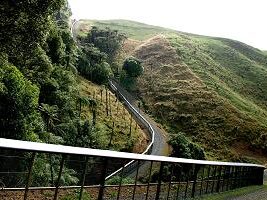
“The purpose of this study was to: (i) document the dominant rodent species utilising the hood of pest fencing at Maungatautari Ecological Island; and (ii) assess whether illuminating sections of fencing could reduce rodent visitation rates. Typically, pest fences in New Zealand are constructed from marine grade (‘316’) stainless steel mesh (6×25 mm) to prevent mammals travelling or burrowing into ecosanctuaries. Additionally, a folded steel hood is attached to the top of the fence with a rolled gutter extending outwards – an important feature that prohibits entry by climbing mammals.”
The aluminium rolled hood of pest proof fencing was first identified as a hotspot of ship rat activity 10 years ago and the researchers say an assessment of rodent presence at pest fencing seemed prudent for forthcoming pest management decisions.
“In New Zealand, ‘pest-proof fences’ have been built to limit or prevent reinvasion after mammal pest eradication. Fence construction and initial pest eradication represent a significant financial investment and sanctuaries must remain protected, especially after receiving translocated threatened taxa.”
Our existing pest-fences have characteristics that expose predator-free sanctuaries to reinvasion by introduced mammals, however.
“For example, fencing across peninsula sanctuaries does not prevent pests walking or swimming around the fence ends, and trees falling on fences create reinvasion opportunities for mammalian pests at forested ecosanctuaries. Furthermore, the probability of incursion by at least one mammalian pest within 24 hours at a fence breach is estimated as 99% in summer and 85% in winter.”
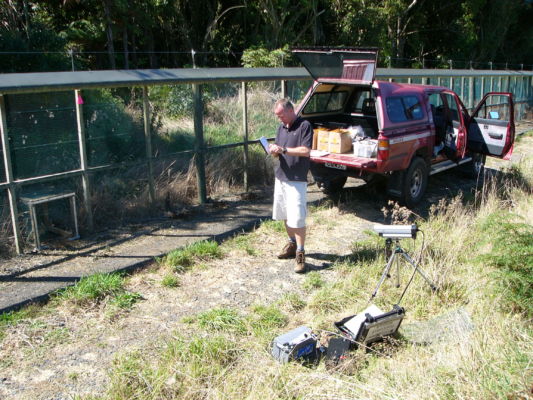
If the opportunity arises, rodents are likely to be first over the wall.
“Rodents are the most frequent mammalian predators present at sanctuary fencing (29.3% of all pest sightings). Mice often travel along the base of ecosanctuary fencing and ship rats regularly utilise the gutter of the fence hood as a safe thoroughfare. Rodents’ recurrent visits to pest fencing and prolific use of the fence hood may increase the probability that rats and mice will locate breaches at the fence base or structural damage within the hood, and lead to a greater chance of invasion.”
“Reinvasion by rats (both R. rattus and R. norvegicus) threaten populations of forest passerines [perching songbirds], herpetofauna [skinks and geckos] and invertebrates, and the seed banks of endemic vegetation. Similarly, when mice reinvade sanctuaries, they are released from predation and competition and their foraging patterns can cause ecological damage.”
“Using deterrents at vulnerable sections of sanctuary fencing may allow conservation managers to minimise rodent reinvasion at ecosanctuaries. For example, applying predation cues can induce avoidance behaviour, and manipulating rodents’ perception of predation risk could offer a novel technique for protecting the endemic fauna within ecosanctuaries.”
Rats and mice are nocturnal and avoid light – even moonlight – as it makes them more visible to predators.
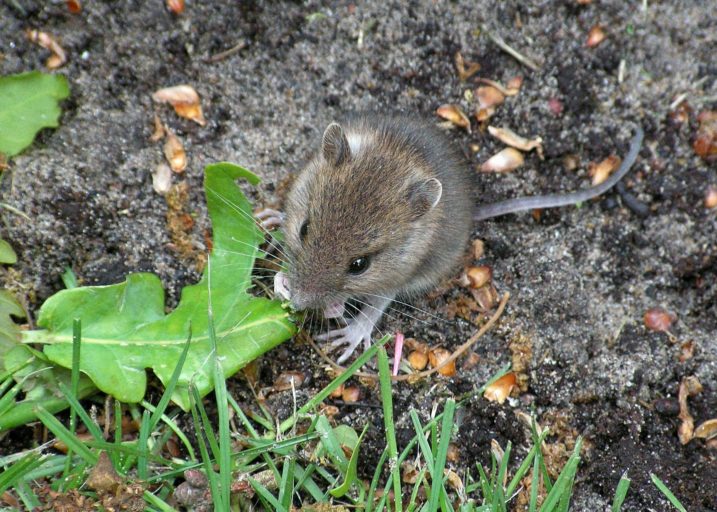
“Illumination is considered an indirect predation cue, and nocturnal rodents often decrease movement or avoid activity under moonlight because increased ambient lighting improves predators’ hunting success. Wild ship rats and non-commensal wild house mice [mice not living close to humans], also modify their behaviour under artificial illumination, indicating that sanctuary managers could exploit the tendency of rodents to avoid illuminated areas by utilising light as a deterrent at ecosanctuaries.”
Mice haven’t been spotted using fence hoods in the way that rats do – but that could be because the rats are there. Rats can be aggressive toward mice, making fence hoods an unsafe place for mice to be.
“While mice have never been sighted within the hood of pest-proof fencing, they may travel along the hood if rat populations are eradicated or even controlled to low levels. In these instances, populations of mice may increase and they may utilise pest fencing more regularly. We therefore recorded rodent visitation rates at pest fencing along two different types of enclosures: one where the fence was accessible only to mice (along an internally fenced ‘cell’ within Maungatautari where all mammalian pests but mice were eradicated – henceforth referred to as the ‘Southern Enclosure fence’) and one where the fence was accessible to both mice and rats (along the perimeter fence of Maungatautari, where minimal pest control occurs – henceforth referred to as the ‘external fence’).”
“Because ship rats behave aggressively towards mice and exclude them from food sources, we predicted that ship rats would be the most prevalent species within the hood of the external fence but that mice would utilise the hood of the Southern Enclosure fence where rats were absent. Furthermore, we applied artificial light to sites along the Southern Enclosure fence and the external fence to assess whether both ship rats and mice would avoid illuminated sections of fencing.”
The study was carried out over two 11-night periods across two months (6–16 December 2015 and 5–15 January 2016) in summer, during the new moon phase of the lunar cycle. This allowed the researchers to rotate treatments across experimental stations while minimising the impact of moonlight. Fifteen stations were set up along the external fence and another 15 along the internal Southern Enclosure.
“Stations set up along the external fence were spaced a minimum of 200 m apart while internal stations were spaced at 150 m intervals along the fencing that encircles the Southern Enclosure of Maungatautari. External stations were initially set up opposite pasture as it was the dominant habitat, and earlier research indicated that rodent sightings did not differ between pasture and forest habitats. However, our preliminary observations revealed few rats (four rat sightings between 6 and 16 December 2015), so we moved seven of the 15 stations to sites opposite forest habitat. The internal stations along the Southern Enclosure fence were all opposite forest habitat.”
“Each station was set up with an infra-red trail camera. In addition to being motion-activated (providing three photos when triggered), each camera was also set to take pictures continuously at five-second intervals. Cameras were positioned to capture images of animals using the underside of the hood.”
Tracking cards were also used to detect rats and mice.
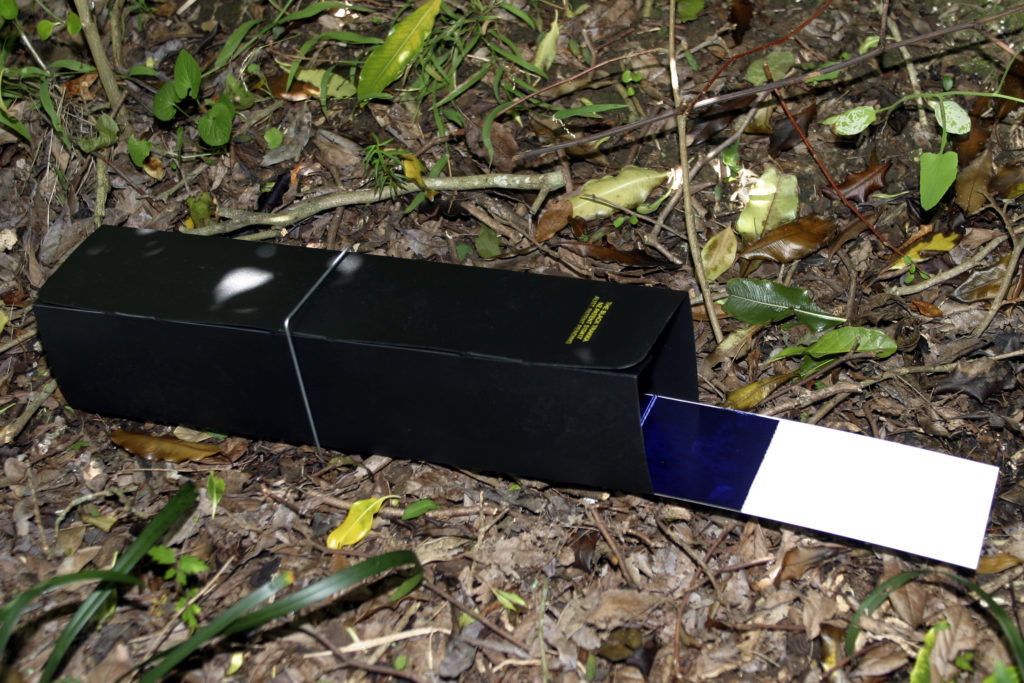
“During our first period of data collection (6-16 December 2015), we detected few rats or mice, and subsequently, in our second monitoring period (5-15 January 2016), one standard tracking card (Black Trakka; Gotcha Traps) was placed in the hood on test nights to capture footprints of any animals undetected by cameras. We also placed a tracking tunnel at the base of the fence underneath our stations to record rodent presence on the ground. Tracking cards from the fence hood were replaced daily, while cards at the base of the fence were collected after an average of six days. Tracking cards and tunnels were not baited to avoid luring rodents to our sites.”
“Each station was systematically allocated one of the three treatments at a time: light (an illuminated lighting fixture); dark (an unilluminated lighting fixture); and baseline (dark with no lighting fixture present to control for any effect of equipment).”
No mice were observed within the hood at internal stations.
“Forty-two observations of ship rats (11 at baseline stations; 15 at illuminated stations; 16 at dark stations) and four observations of mice (3 at baseline stations; 1 at a dark station) were recorded within the hood of the external perimeter fence over 131 sampling nights. Along the internal fence, mice were never observed within the hood but marked 40% of tunnels at the fence base. Along the perimeter fence, mice made four visits to the hood and marked 28% of tunnels at the fence base.”
All 42 observed rats travelled exclusively within the fence hood.
“Light did not reduce rat sightings but adjacent habitat affected their presence (forest > pasture). Positioning future ecosanctuary fencing alongside pasture and maintaining open corridors opposite fences at current ecosanctuaries may reduce rat presence.”
The lack of a deterrent effect from lighting within the hood was unexpected.
“Our hypothesis that rodents would avoid illumination to reduce their predation risk was not supported. While Farnworth et al. (2019) found that captive wild ship rats significantly reduced visitation rates (by 53%), exploration (by 70%) and movement (40% slower) under illumination, in the current study the number of ship rats recorded at lit stations did not differ from unlit stations.”
The researchers speculate that the size of the illuminated area may be a determining factor.
“However, the size of the illuminated area that rodents must travel through may influence their perception of risk and their foraging behaviour. For example, light only extended across a small area within the hood of Maungatautari’s pest-fencing (0.028 square metres), compared to Farnworth et al.’s (2019) much larger 2.3 square metre illuminated area. At Maungatautari, rats could rapidly (under 5 seconds) travel through the lit section of the hood, and such a brief exposure may not have elevated rodents’ perception of predation risk enough to deter their movement. Furthermore, exiting the hood to avoid light would expose rats to predators which frequently patrol the fence perimeter.”
“For example, Connolly et al. (2009) reported 116 sightings of cats in summer and 80 in winter at Maungatautari. Ship rats may have remained within the fence hood because exposure to light (an indirect predation cue) was less risky than encountering predators (a direct predation cue) at the base of the fence. Remaining within the hood may also offer improved foraging opportunities for ship rats. Invertebrates, such as weta (Auckland tree weta, Hemideina thoracica, and cave weta, Rhaphidophoridae spp.), are an abundant source of food within the fence gutter at Maungatautari.”
With the hood structure offering both safety and a food source, its no wonder ship rats are cruising the fencetops. What the researchers hadn’t expected to see up there – based on earlier research – was the mice.
“We expected that ship rat competition and predation would exclude mice from external stations, but we captured four visits by mice on our trail cameras and collected one card tracked by mice from the hood of perimeter fencing. Fewer rats, especially opposite pasture habitat, may have allowed mice to increase their activity in areas they are usually restricted from accessing. However, we never observed mice within the hood of Maungatautari’s Southern Enclosure fence, despite the absence of rats there.”
Getting up into the hood is more challenging for the smaller mice, the researchers believe.
“Although mice are agile, they may only utilise the hood once they reach a certain size if entry and exit from the hood is physically challenging. Compared to ship rats (120–160 g), house mice are much smaller (17–26 g) and their size may impair their ability to climb along the fence into the hood. Although prior sampling in vegetation at Maungatautari found evidence of mice at heights that exceeded that of the fence, they tracked a larger percentage (93%) of devices on the ground, indicating a preference for travelling on the forest floor. Thus, despite being good climbers, the risk of reinvasion by mice may be greater from structural damage occurring at the base of the fence, especially when considering other research showing that 86.6% of mice sighted entered a simulated fence breach at ground level.”
Might it be possible to design predator fences differently, to discourage their use as a rodent highway?
“The repeated use of the hood by ship rats in both this study and earlier research suggests that fencing erected for future pest management schemes should consider a different design profile to reduce rodent traffic. However, conservation managers may still benefit from the existing fencing by setting traps or poison on the lip on the inside of the hood.”
“Research into deterrents that keep sanctuaries free from rodents remains valuable, as rats and mice may place increased pressure on pest-fences after experiencing mesopredator release as New Zealand moves towards the 2050 vision of a ‘Predator Free New Zealand’,” the researchers conclude.
The full research article is published in the New Zealand Journal of Zoology. Only the abstract is freely available online to non-subscribers, but access may be available through public libraries.
Who’s in the hood? Assessing a novel rodent deterrent at pest fencing in New Zealand (2020)

